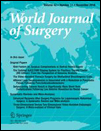Preliminary Report of Percutaneous Cholecystostomy as Diagnosis and Treatment of Biliary Tract Trauma
Abstract
Background
Biliary leak following severe blunt liver injuries is a complex problem becoming more frequent with improvements in non-operative management. Standard treatment requires main bile duct drainage usually performed by endoscopic sphincterotomy and stent placement. We report our experience with cholecystostomy as a first minimally invasive diagnostic and therapeutic approach.
Methods
We performed a retrospective analysis of consecutive patients with post-traumatic biliary leak between 2006 and 2015. In the first period (2006–2010), biliary fistula was managed using perihepatic drainage and endoscopic, percutaneous or surgical main bile duct drainage. After 2010, cholecystostomy as an initial minimally invasive approach was performed.
Results
Of 341 patients with blunt liver injury, 18 had a post-traumatic biliary leak. Ten patients received standard treatment and eight patients underwent cholecystostomy. The cholecystostomy (62.5%) and the standard treatment (80%) groups presented similar success rates as the first biliary drainage procedure (p = 0.41). Cholecystostomy presented no severe complications and resulted, when successful, in a bile flow rate inversion between the perihepatic drains and the gallbladder drain within a median [IQR] 4 days [1–7]. The median time for bile leak resolution was 26 days in the cholecystostomy group and 39 days in the standard treatment group (p = 0.09). No significant difference was found considering median duration of hospital stay (54 and 74 days, respectively, p = 0.37) or resuscitation stay (17.5 and 19.5 days, p = 0.59).
Conclusion
Cholecystostomy in non-operative management of biliary fistula after blunt liver injury could be an effective, simple and safe first-line procedure in the diagnostic and therapeutic approach of post-traumatic biliary tract injuries.




